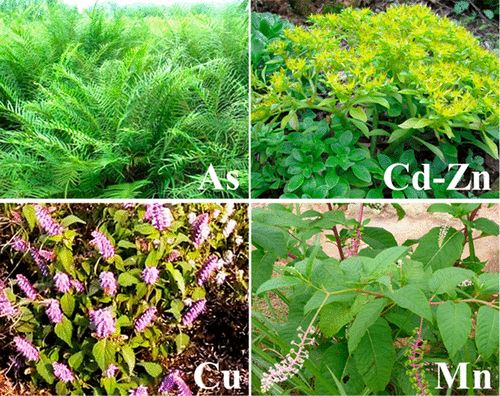Hi everyone!
In the last post, we covered a possible (and rather entertaining) solution surrounding land pollution due to rubbish – Thailand’s way of sending tourist trash back to their ‘owners’. In this post, we’ll be moving on to two solutions mooted in research papers that we encountered when looking up ways to tackle heavy metal pollution in the soil. Once again, we’ll be framing this in the context of heavy metals being leached into the soil during the construction of tourism amenities.
Filtering the soil
According to recent research done at Stanford University (2019), one novel way to deal with heavy metals can be to run the contaminated soil through a solution containing a highly negatively-charged chemical known as EDTA (the full name is a mouthful: Ethylenediaminetetraacetic acid), which attracts all the positively charged heavy metal ions to it. The whole solution is then run through an electromagnetic filter, which will then allow for the removal of the heavy metals, now attached to the EDTA particles.
The squiggly powerhouse that attracts heavy metals (Source: Wikipedia)
Admittedly, this novel method still has some way to go, with the researchers yet to try it in a real-life contaminated field, away from the laboratory. Yet, one can quite readily imagine this method being put in place after the construction of, say, a hotel – the grounds are washed with the solution, and then upon surveying of the soil hydrology, the filters are put in strategic positions to cleanse the soil.
Plants to the rescue
A second, promising and perhaps more viable method to extract heavy metals from the soil is through the use of plants in a process known as phytoextraction.
In its essence, this method makes use of the ability of plants to take up nutrients in the soil – with some plants branded as ‘hyperaccumulators’ for their ability to take up not only nutrients but also nonessential elements (up to a 100-fold times more than the non-hyperaccumulators) – in this case, heavy metals (Ghori et al., 2016). The heavy metals are made soluble through substances known as chelating agents (organic acids with names that are a mouthful, like ethylene diamine disuccinate), which then render the heavy metals absorbable by these ‘hyperaccumulative’ plants. Once this phytoextraction process is complete, the plants can then be removed from the soil.
For us here at Paradise (Not Yet) Lost, we see this as a viable possibility for hotels and tourist amenities as the plants that have been identified as hyperaccumulators are actually pleasing to the eye – meaning that they can very well be decorative elements, or be part of a new effort in going green. We can’t think of any reason why tourism operators would reject something that not only brings about environmental benefits but aesthetic improvements as well!

Pleasing plants that can take in heavy metals (Source: Li et al., 2018)
Can they work out?
That’s always the question – and we believe it’s a resounding yes, as long as the relevant operators commit (and we mean, really commit) to installing whatever technology is most cost-efficient and effective. As tourism operators and hotels try to green their image in a more climate-conscious century where visitors are likely to be more cognisant of environmental practices, voluntarily dealing with unseen, underground problems will surely earn them extra brownie points other than the usual water-saving and optional-bath-towel-changing policies.
For us tourists, we obviously can’t have a say in the way tourist businesses are run – but we can use our dollars to speak for us, and that means supporting business that engage in responsible behaviour.
Indeed, there’s nothing to lose and all to gain for those who clean up their act.
—
References
Ghori, Z, Iftikhar, H, Bhatti, M.F, Minullah, N.U, Sharma, I, Kazi, A.G, Ahmad, P 2016, ‘Phytoextraction: the use of plants to remove heavy metals from soil’, in P Ahmad (ed.), Plant Metal Interaction, Elsevier, Amsterdam, pp. 385-407.
Li, J, Gurajala, H.K, Wu, L, van der Ent, A, Qiu, R, Baker, A.J.M, Tang, Y, Yang, X, Shu, W 2018, ‘Hyperaccumulator plants from China: a synthesis of the current state of knowledge’, Environmental Science and Technology, vol. 52, no. 21, pp. 11980-11994, doi: https://doi.org/10.1021/acs.est.8b01060
Stanford University 2019, ‘New process to rinse heavy metals from soils’, Science Daily, viewed 14 October 2020, https://www.sciencedaily.com/releases/2019/06/190604084828.htm
Wikipedia n.d., Ethylenediaminetetraacetic acid, online image, viewed 14 October 2020, https://en.wikipedia.org/wiki/Ethylenediaminetetraacetic_acid